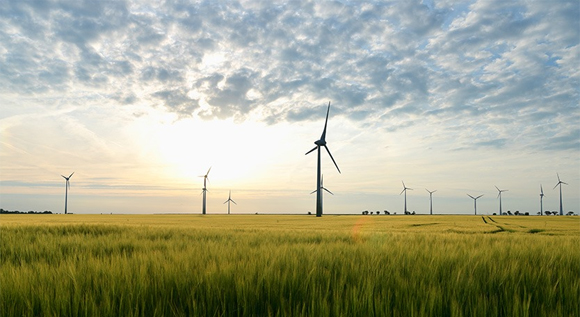Expansion of nature-compatible wind power to be accelerated significantly
The Federal Cabinet has approved a law aimed at further accelerating the expansion of onshore wind energy and achieving the two-percent land use target by 2032. It commits the federal states to making significantly more territory available.
 © Adobe Stock / industrieblick
© Adobe Stock / industrieblick
By 2030, the share of renewable energies in the electricity supply is to be increased to 80 percent. In order to achieve this aim, onshore wind energy must be expanded by a further ten gigawatts (GW) every year. By 2035, the installed capacity is to grow to 157 GW, and by 2040 to 160 GW. From then on, the installed capacity is to remain at this high level.
However, the expansion of wind energy is not only crucial to achieving climate goals. Since the start of the Russian war of aggression in Ukraine, it has also irreversibly become a matter of national security and essential to increasing Germany's independence from imports of fossil fuels. And to achieve all this, more land area must be made available for onshore wind.
Each federal state will therefore be required to make a contribution to the expansion of wind energy. Two percent of the state's land area is to be made available for onshore wind energy in the future. To date, however, only around 0.5 percent has been designated for expansion. By 2026, this is now to be increased to 1.4 percent with the Onshore Wind Energy Act and will reach the full two per cent by 2032. To achieve this, large states in terms of area must set aside between 1.8 and 2.2 per cent and city states 0.5 per cent of their territory for wind energy by 2032. States that exceed their targets may „cede" part of their wind zones to other states.
Federal states may continue to designate its wind zones areas and minimum distances from wind turbines. However, if a federal state fails to meet its area targets as specified in the Onshore Wind Energy Act, state-specific minimum distance rules will not be applied within the designated wind zones. This is to ensure that state-specific minimum distance rules do not prevent the area targets being met.
Legal safeguards will be in place to ensure that landscape conservation areas can also be included when selecting areas for wind energy expansion. At the same time, protection zones for endangered species will be defined and high ecological standards guaranteed.

